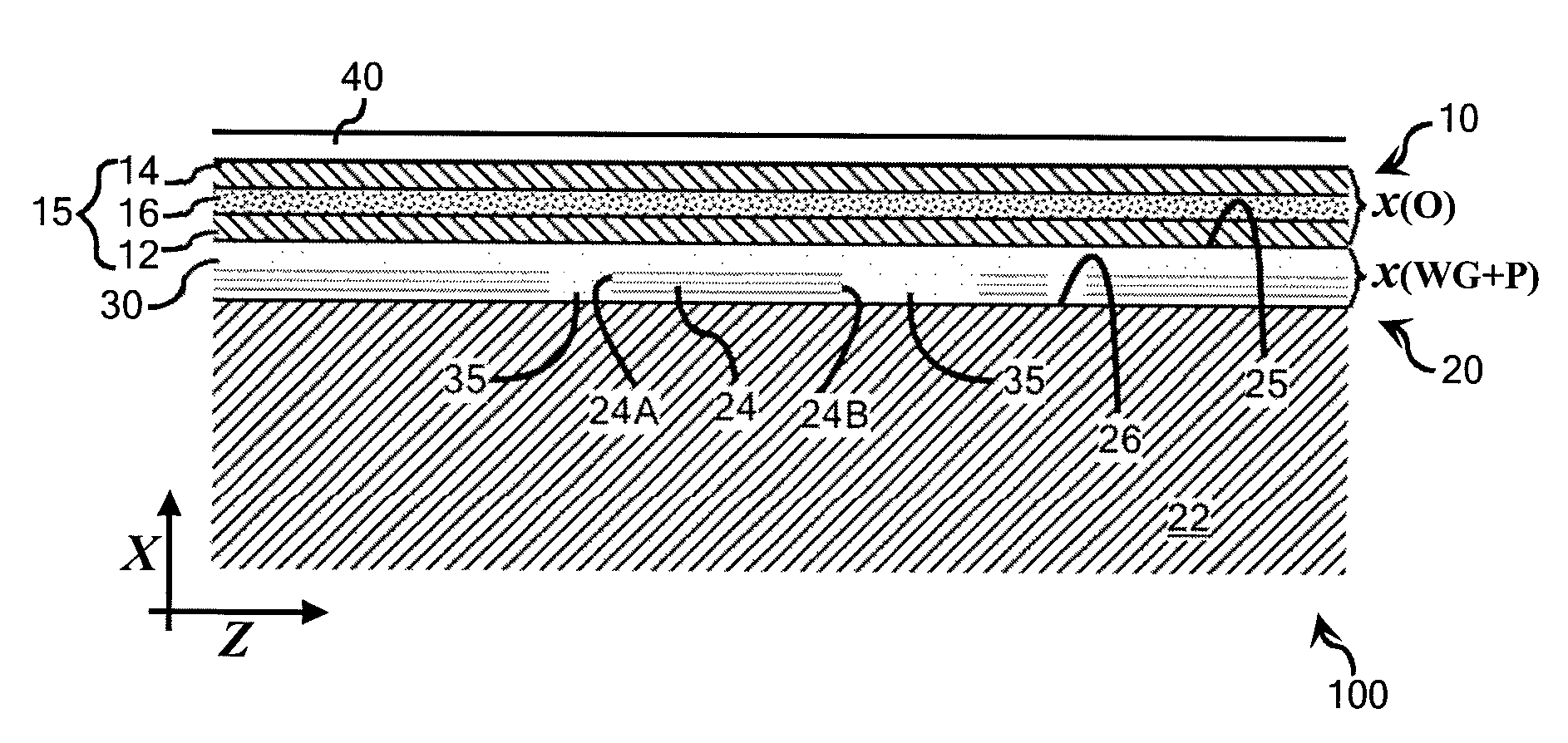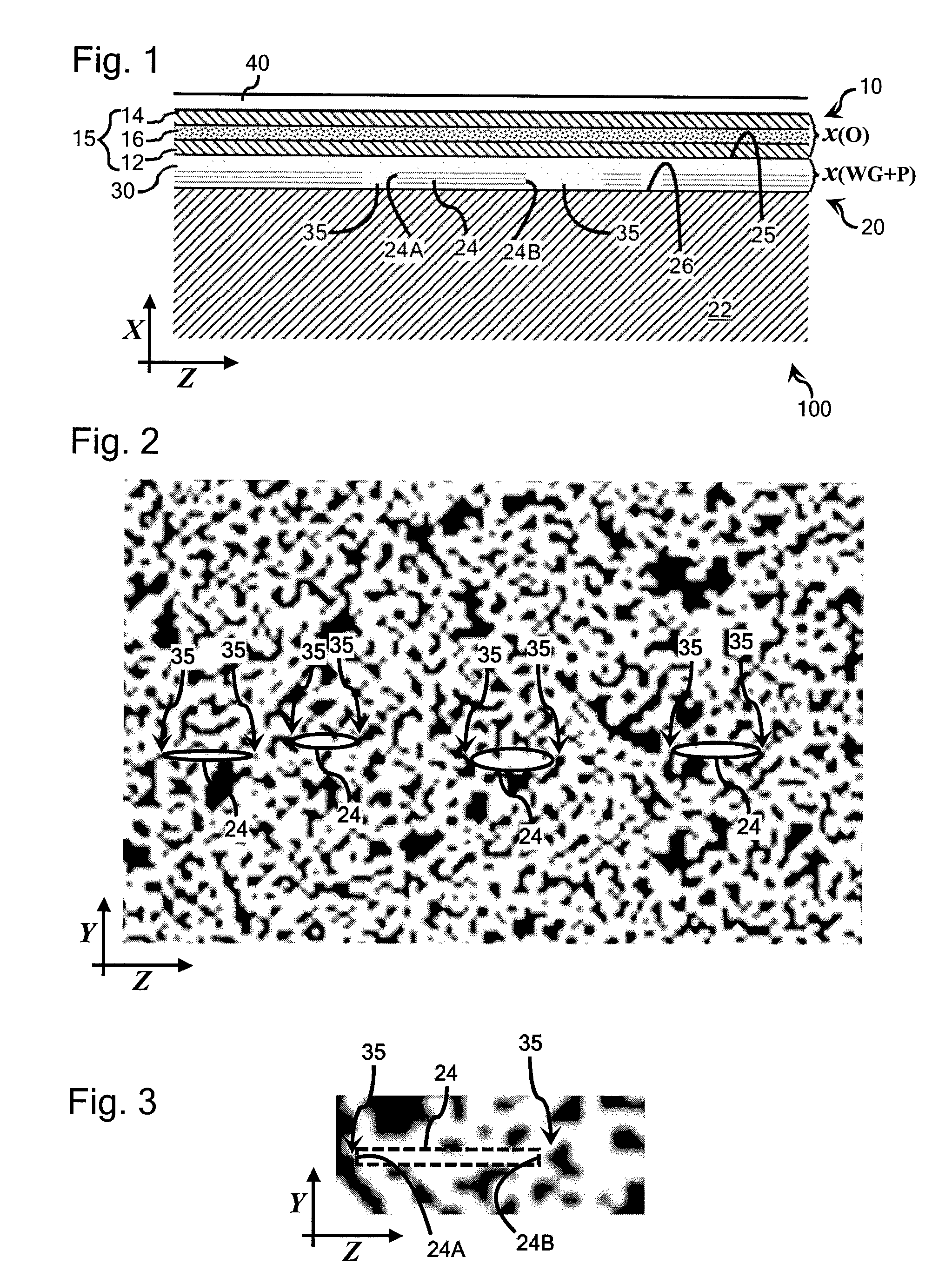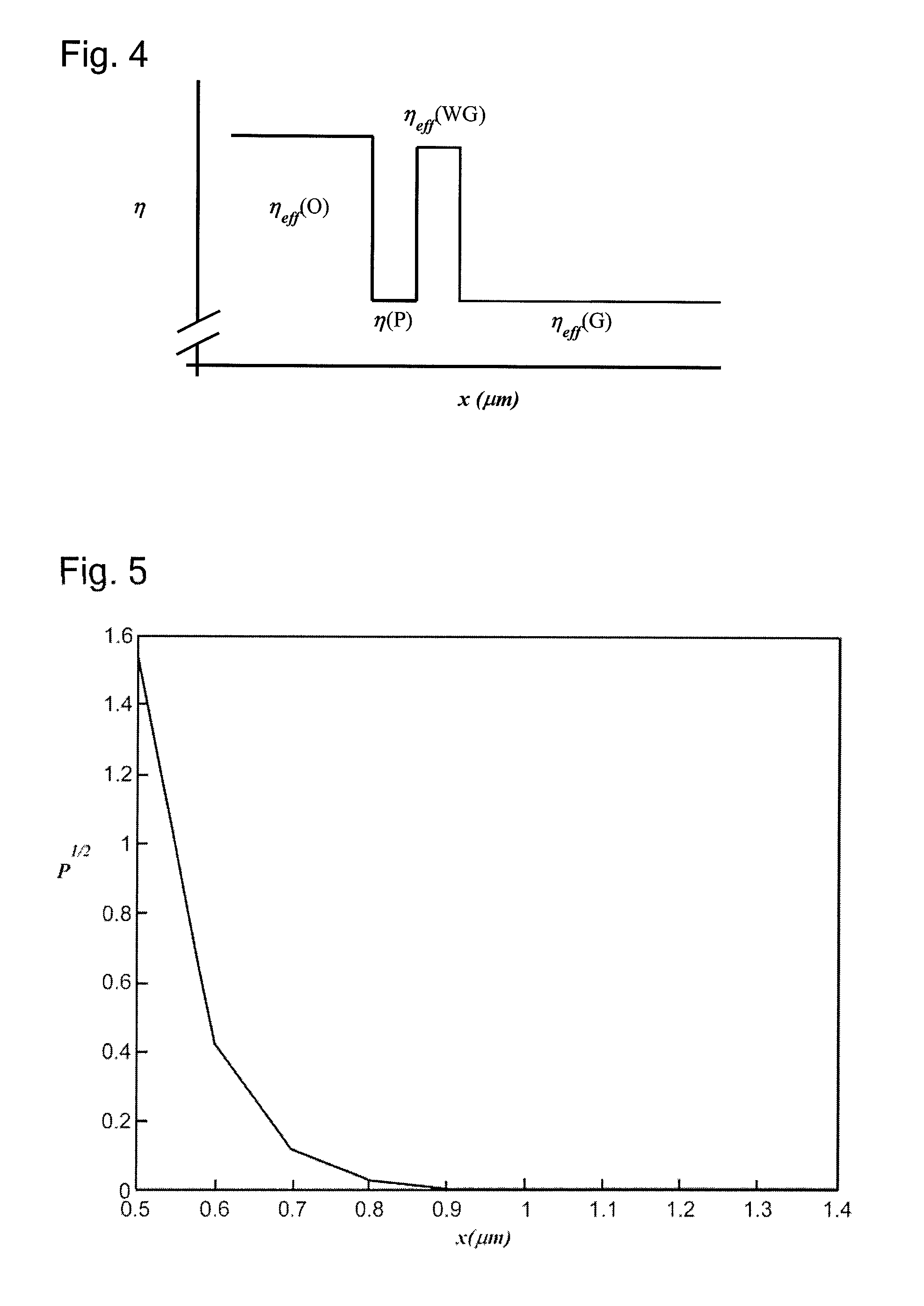OLEDs comprising light extraction substructures and display devices incorporating the same
a technology of light extraction substructure and display device, which is applied in the direction of thermoelectric device junction material, semiconductor device, electrical apparatus, etc., can solve the problems of 45% trapped in the organic material of the device and approximately 30% trapped in the glass layer of the device, so as to reduce the entrapment within the glass layer, enhance the light extraction effect, and generate efficient
- Summary
- Abstract
- Description
- Claims
- Application Information
AI Technical Summary
Benefits of technology
Problems solved by technology
Method used
Image
Examples
examples
[0034]FIG. 6 shows intensity obtained for the device (FIG. 6A) fabricated according to the schematic of FIG. 1 but without the smoothing or planarization layer. Left side of the device contains the nanoparticles on the OLED and the right side contains only the OLED. The intensity difference is shown on the graph (FIG. 6B) where the increased intensity (3.4×) in the presence of the scattering sites.
[0035]FIG. 7 shows SEMS of a glass with a scattering layers and planarization layer / s. FIG. 7A shows a ˜2 um thickness total and FIG. 7B shows a 3.7 μm thickness. In both pictures, the scattering layer shows up as the white particles at the lower interface and the planarizing layer is the roughened surface above the scattering layer.
[0036]Table 1 shows AFM RMS roughness measurements for the corresponding SEMS shown in FIG. 7A (˜2 μm thickness) and FIG. 7B (3.7 μm thickness). Total RMS surface roughness shows a dependence on binder depth as well as agglomerate size.
[0037]
TABLE 1Thickness(SE...
PUM
 Login to View More
Login to View More Abstract
Description
Claims
Application Information
 Login to View More
Login to View More - R&D
- Intellectual Property
- Life Sciences
- Materials
- Tech Scout
- Unparalleled Data Quality
- Higher Quality Content
- 60% Fewer Hallucinations
Browse by: Latest US Patents, China's latest patents, Technical Efficacy Thesaurus, Application Domain, Technology Topic, Popular Technical Reports.
© 2025 PatSnap. All rights reserved.Legal|Privacy policy|Modern Slavery Act Transparency Statement|Sitemap|About US| Contact US: help@patsnap.com



